Website analytics can help websites keep track of all their visitors. In addition, it is a tool that helps website owners understand how visitors interact with their websites.
Matomo is a popular web analytics tool, but it has its drawbacks. In this article, we'll dive into Matomo and showcase a few alternatives that might suit you better.
- What is Matomo used for?
- Matomo Pricing
- Matomo Reviews
- Matomo Alternatives
- What to look for in an analytics tool
- Final Thoughts
What is Matomo used for?
Matomo is an analytics tool that branched out of a popular open-source analytics tool called Piwik. One benefit of Matomo is that it comes with a self-host (on-premise) and cloud version. Most people choose the cloud version, though, as the self-host version requires dedicated knowledge of servers.
Though Matomo comes with many useful features and reasonable pricing, the UI is reported to be complex by some of its users. In this case, choosing a more straightforward, easy-to-use, and understandable alternative is better.
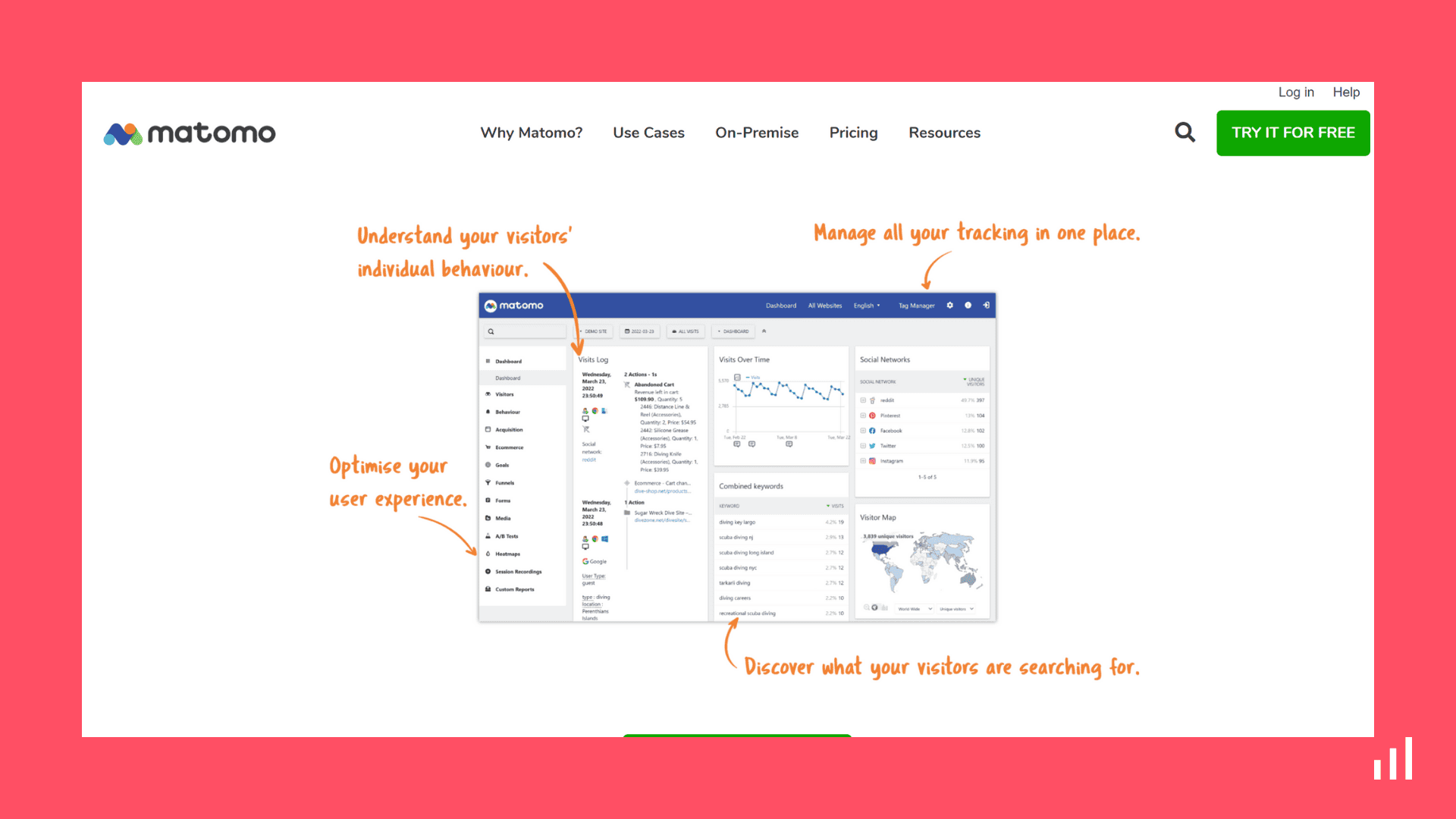
Matomo Pricing
Two price options are available for Matomo: a self-hosted version and a cloud-hosted version. The cloud plan is priced per site. The cloud-hosted version starts at $19 per month for 100k monthly pageviews.
The self-hosted version is free; users can upgrade to the premium version for extra features like heatmaps, session recordings, and A/B testing.
| On-Premise | Cloud | |
|---|---|---|
| Pricing | $0/month Includes: Unlimited websites Unlimited team members Unlimited segments Unlimited goals Google Analytics data importer GDPR Manager API access Standard reports | $0/month Includes: 30 websites 30 team members 100 segments 150 goals Google Analytics data importer GDPR Manager API access Standard reports Activity Log WooCommerce Analytics ...and much more |
Matomo Reviews
What do you like best about Matomo (Formerly Piwik)?
Matomo is a very precise tool, many more than Google Analytics; It is very simple to use
What do you dislike about Matomo (Formerly Piwik)?
I don't like something about the free preview, maybe is too short to evaluate well all the instrument
What problems is Matomo (Formerly Piwik) solving and how is that benefiting you?
I used Matomo to analyze the insight of my blog, and it makes me watch some aspetcts, that I can't see in Google Analytics
Matomo Alternatives
Previously known as Piwik, Matomo is a well-liked open-source analytics tool. However, there may be better options for some. The very steep learning curve of Matomo is one of its drawbacks, which could be difficult for those who are less tech-savvy.
Simple Analytics (easy to use and predictable pricing)
As the name goes, Simple Analytics is a simple and easy-to-use analytics tool. It's also one of the few analytics tools completely GDPR-compliant with EU-hosted servers.
Also, simple doesn’t refer to a lack of features here. It's a robust web analytics tool that doubles as a minimal product analytics tool, too, with event and goal-tracking capabilities.
PS: If you are looking for a Google Analytics replacement, you might want to check out a direct comparison with Google Analytics
Now let's review a few benefits of using Simple Analytics over Adobe Analytics.
Pros of using Simple Analytics
- Simplified UI - Simple Analytics offers a straightforward user interface that makes analysis easier. It's 10x easier to work with than GA4. Checkout the public dashboard to see what that looks like.
- Affordable Pricing - Simple Analytics starts at a reasonable price.
- No cookie banner - Simple Analytics gives you the insights you need without using cookies or trackers. Hence, no need for an annoying cookiebanner on your website.
- Chat with your analytics - Simple Analytics AI is the latest features that lets you chat with your analytics and get insights directly.
Cons of using Simple Analytics
The user interface of Simple Analytics is made to look simple and easy to understand so everyone, be it the founder or marketing teams, can use it easily. A Product Manager may need a few more screens, but that is something that can be quickly built with Goals.
Pricing of Simple Analytics
Simple Analytics is one of the most cost-efficient tools available in its segment. It caters to companies and has plans for individuals and students. It ensures the best features are available at a reasonable price.
The pricing of Simple Analytics starts at a low $9/month, making it a pocket-friendly tool for all businesses.
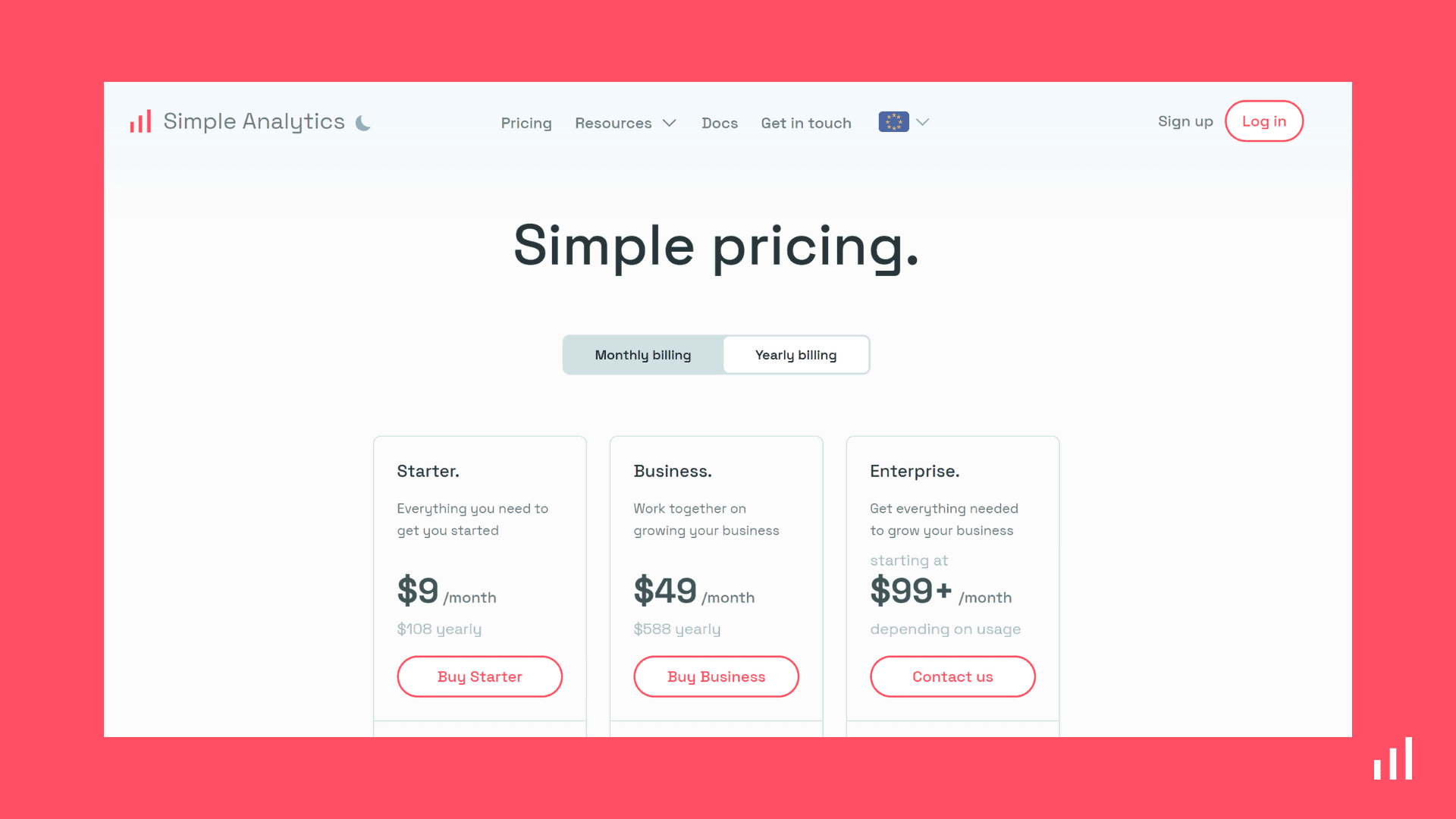
Plausible
Plausible is a lightweight and privacy-focused web analytics tool that provides website owners insights into visitor behavior. It was founded in 2019 and is based in Estonia.
Plausible offers a clean and straightforward user interface that makes it easy to use.
They do have a focus on privacy, but according to many independent researchers and thought leaders, it may not be as privacy-friendly as they state. More can be read in this article, which was popular on HackerNews.
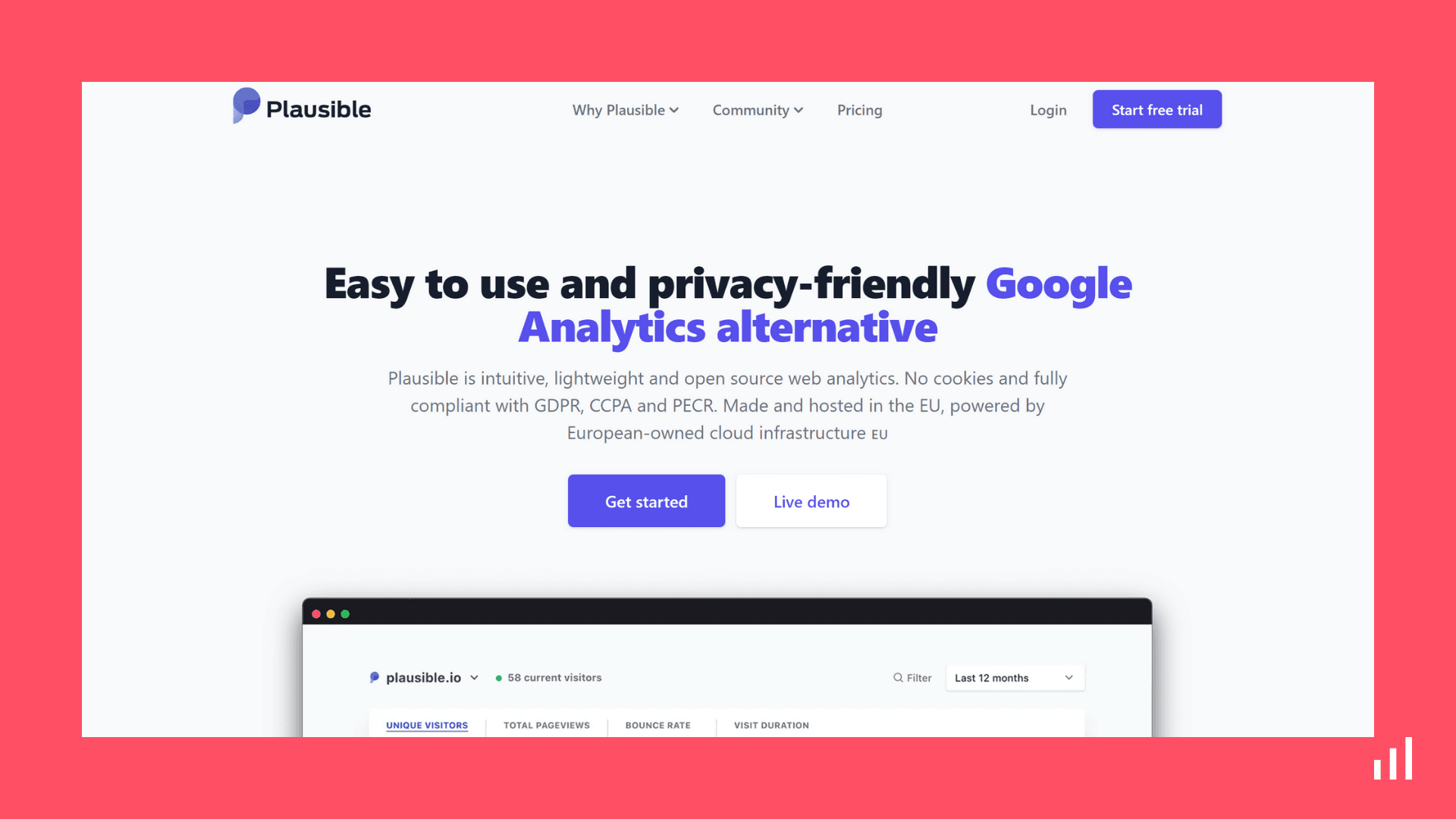
Pros
- Provides detailed reports on visitor behavior.
- Privacy-focused, which means it doesn't use cookies or collect personal data.
- Offers a clean and straightforward user interface.
- Provides customizable dashboards and reports.
- Offers a free trial.
Cons
- Limited features compared to other paid options.
- A lower degree of in-depth reporting.
- Other solutions are more privacy-friendly.
Pricing
Plausible’s pricing starts at $9/month when paid monthly or $7.5/month when paid annually. Though this is indeed affordable, you’ll have to keep in mind that this is the pricing for websites with less than 10,000 page views.
The next tier starts at $19/month when paid monthly or ~$15.9/month when paid annually for websites with less than 100,000 pageviews.
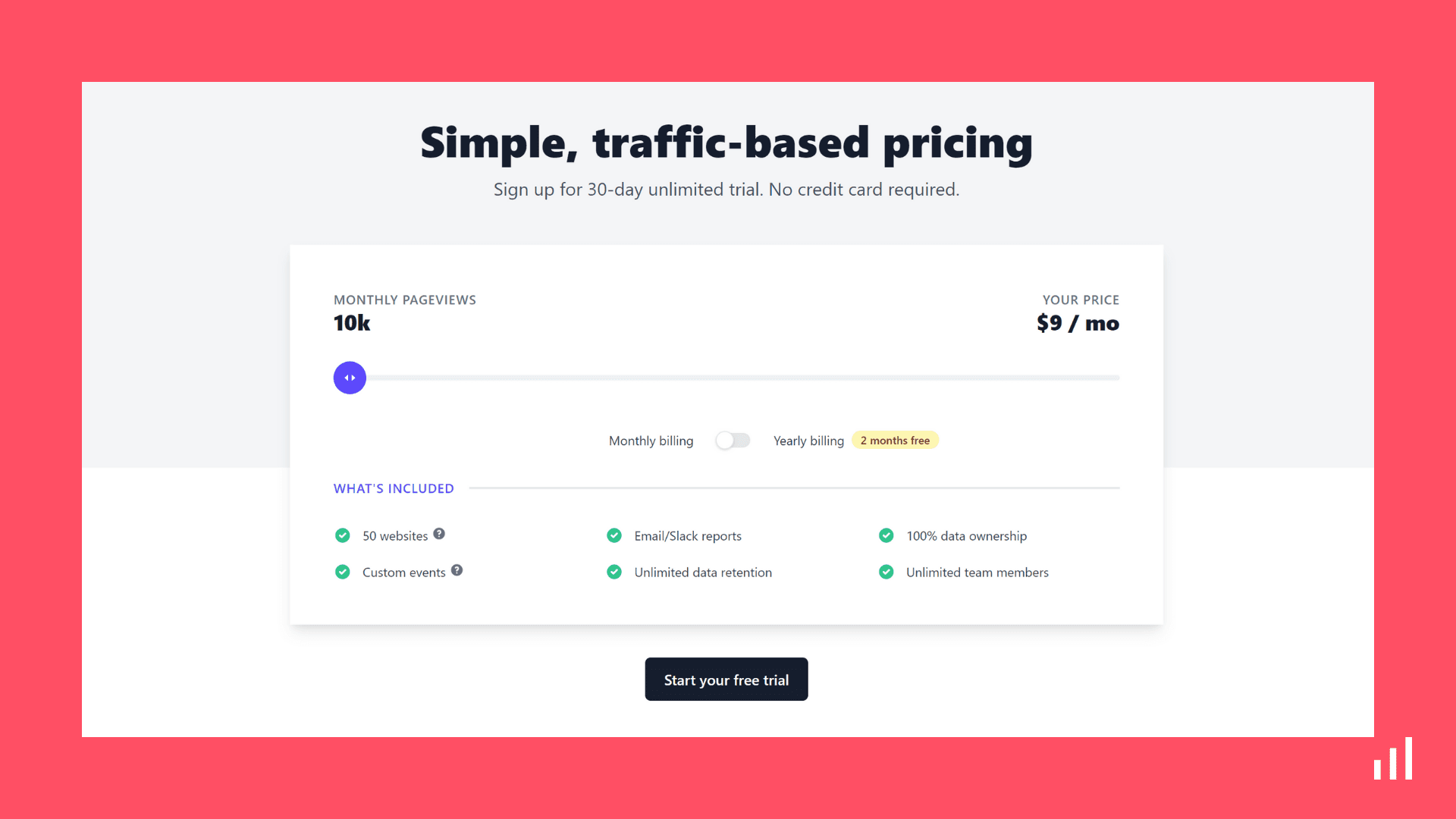
Adobe Analytics
Adobe Analytics is a small part of Adobe’s giant Marketing Cloud. It’s a tool meant to be a complex web analytics tool that also comes with Business Intelligence (BI). Also, Adobe Analytics works best when you have the other Marketing Cloud tools.
If you are just looking for a simple yet powerful analytics tool, Adobe Analytics may not be the right choice as it’s complex, needs other tools to function properly, and is expensive too.
You should only consider it only if you have specific feature requirements such as predictive analytics but be ready to shed a ton of money.
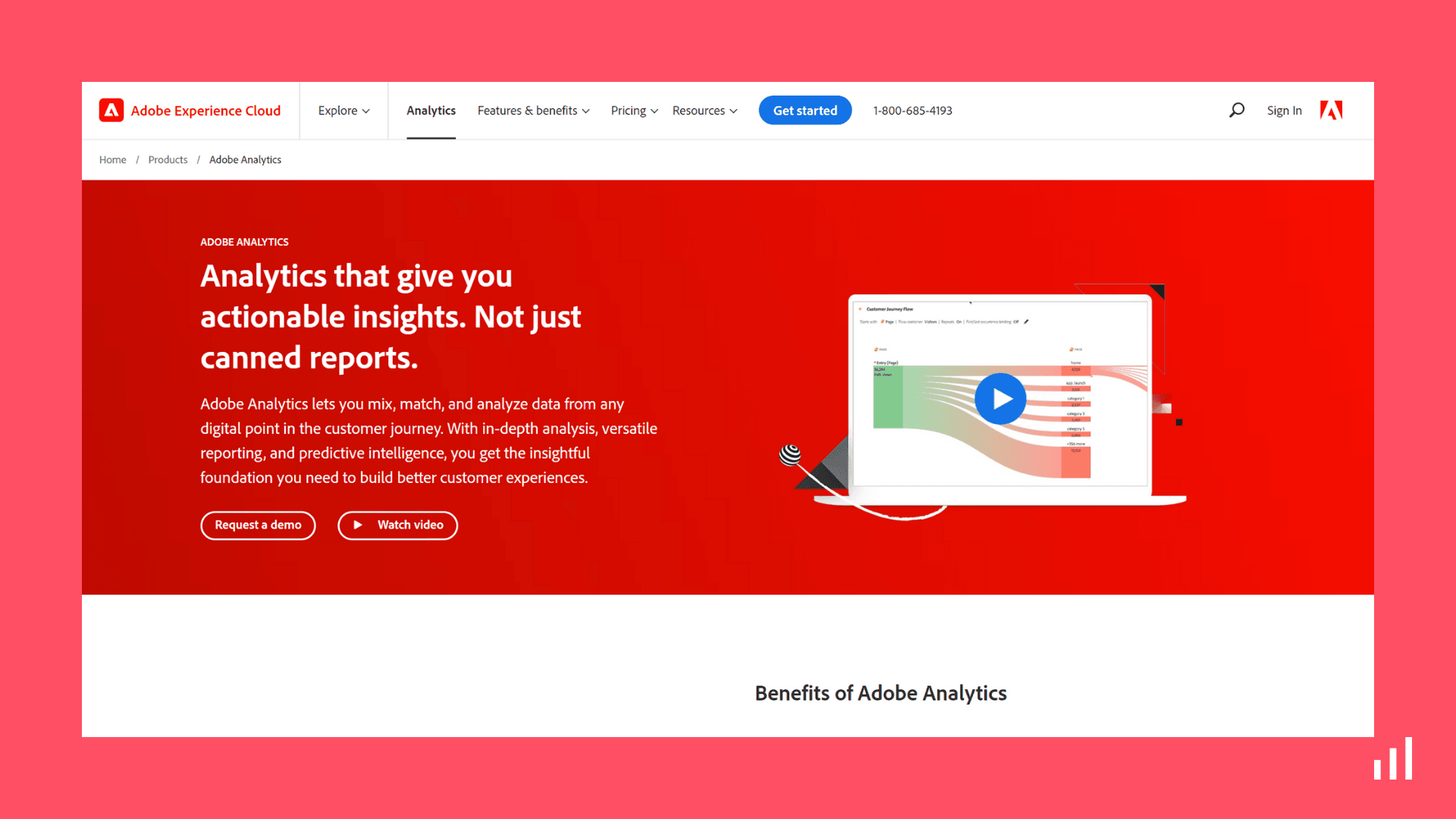
Pros
- Adobe Analytics has been in business for many years, making it a mature tool with many features.
- Apart from just web analytics, it also doubles up as a marketing analytics tool with features like ad hoc analysis and multichannel data collection.
Cons
- Adobe Analytics is a sales-led product, and you would often need an implementation partner. It’s a very complex analytics tool.
- The cost of Adobe Analytics, along with the fees/charges of the implementation partner, makes it an expensive affair.
- It needs to work with many other Adobe products to give businesses all the data it can, but then it makes it very complex.
Pricing
Adobe Analytics provides three different plans along with many add-ons. The plans “Select,” “Prime,” and “Ultimate.” The pricing of all the plans is hidden behind a “Get Pricing” button, which makes you contact the sales team to get pricing info.
Though the pricing info isn’t public, however according to Nabler, the pricing is somewhere between $48,000 on the lower side and $350,000 on the high side.
Paying and justifying this much for an analytics tool is only justifiable when the revenue is in multi-millions, and even then, you can find better options.
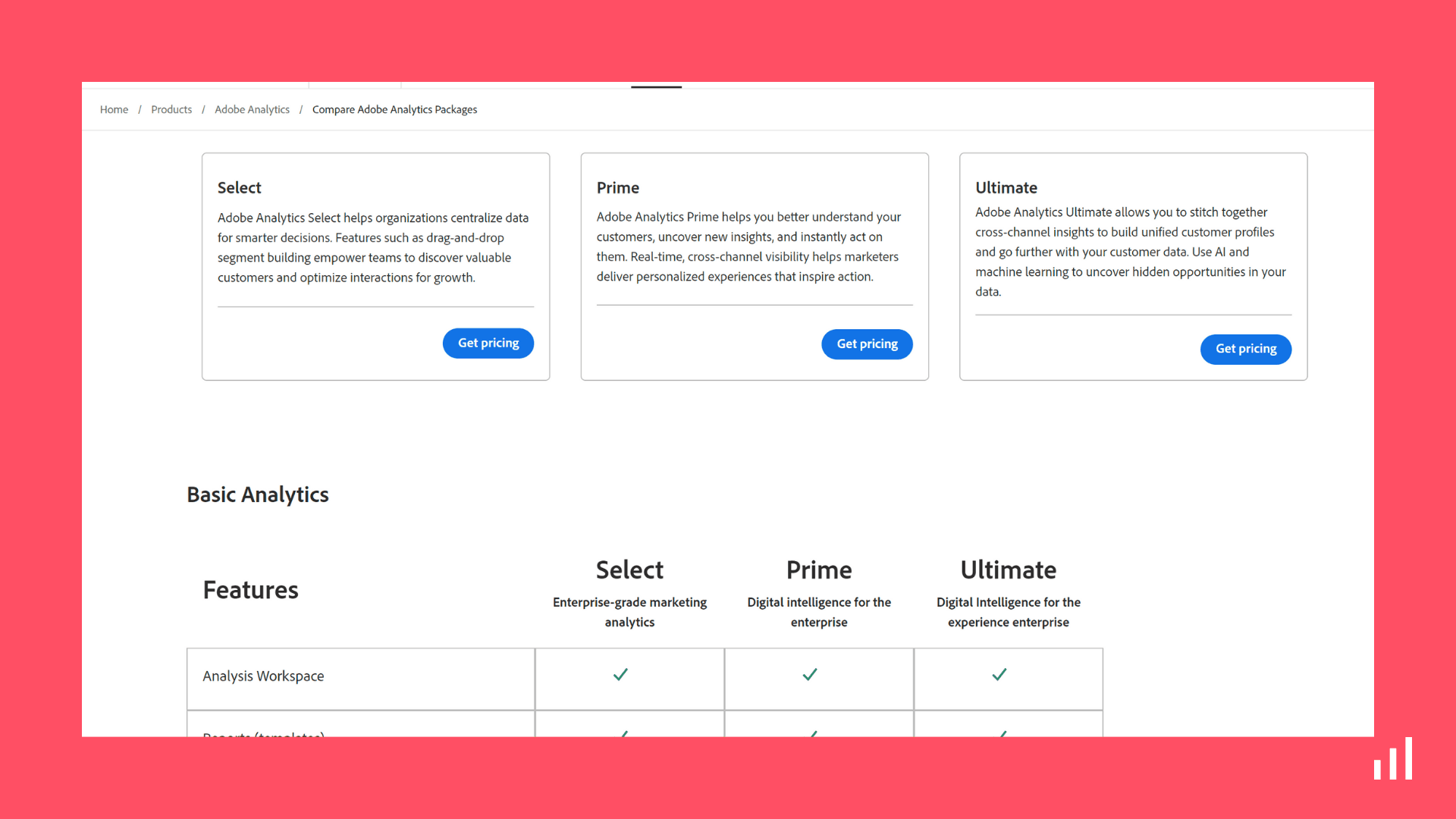
Pirsch
Pirsch Analytics is a privacy analytics tool based out of Germany. It’s an affordable and simple-to-use analytics tool with all the features such as event tracking, goal tracking, and much more. In addition to that, it’s a pretty affordable tool to start.
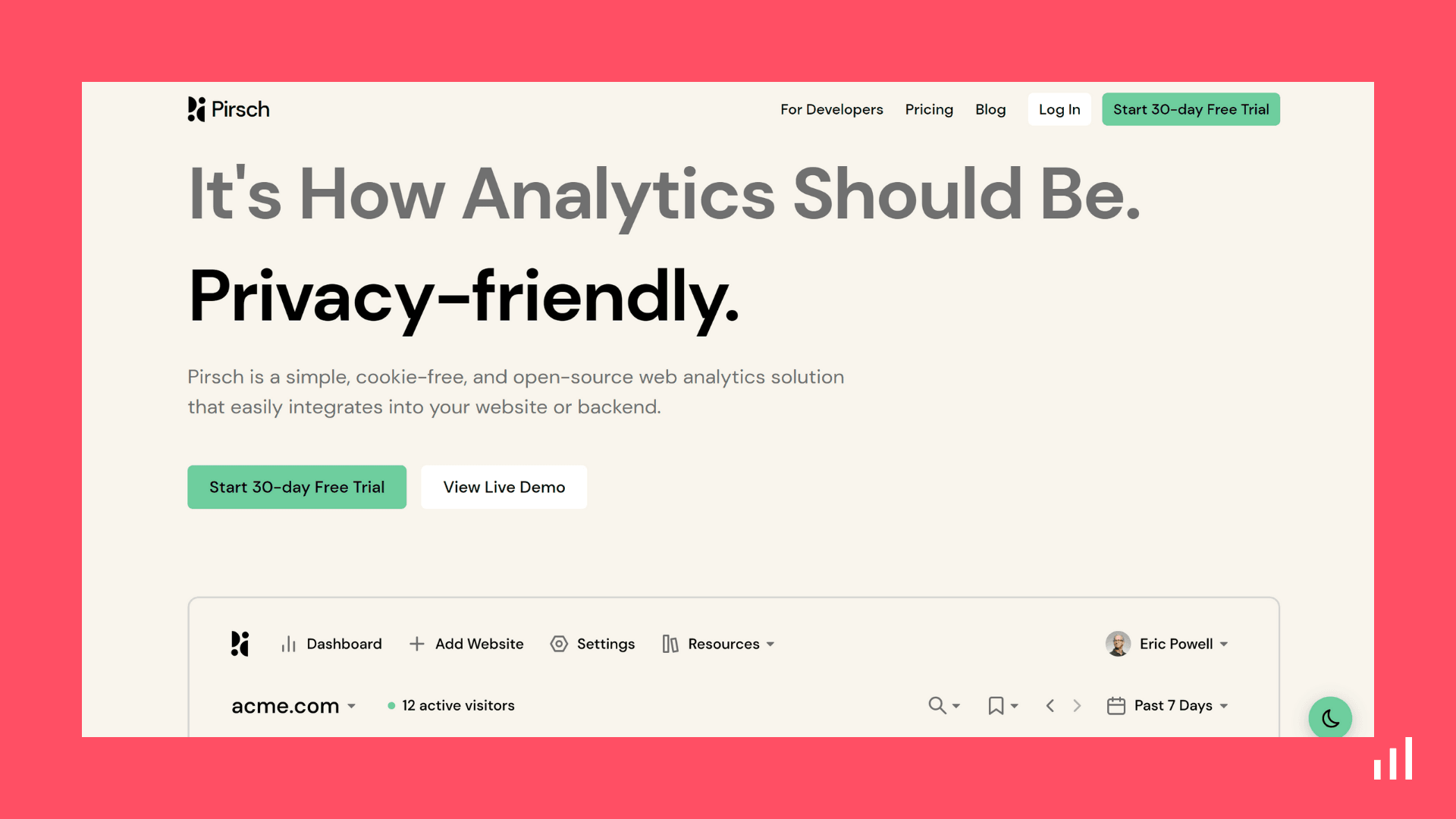
Pros
- Simple and easy-to-understand dashboard.
- Budget-friendly option.
- Easy to install.
Cons
- Proxying is very tricky and needs some technical knowledge (used to bypass adblockers)
- They have not been in business for long and have less track record than other solutions.
- Event-setting and goal-tracking features are limited
Pricing
Pirsch Analytics is a pretty affordable tool, especially for low-traffic websites. The pricing for Pirsch Analytics starts at $5/month when paid annually for 10,000 pageviews. The next pricing tier supports websites for up to 100,000 pageviews and costs $10/month.
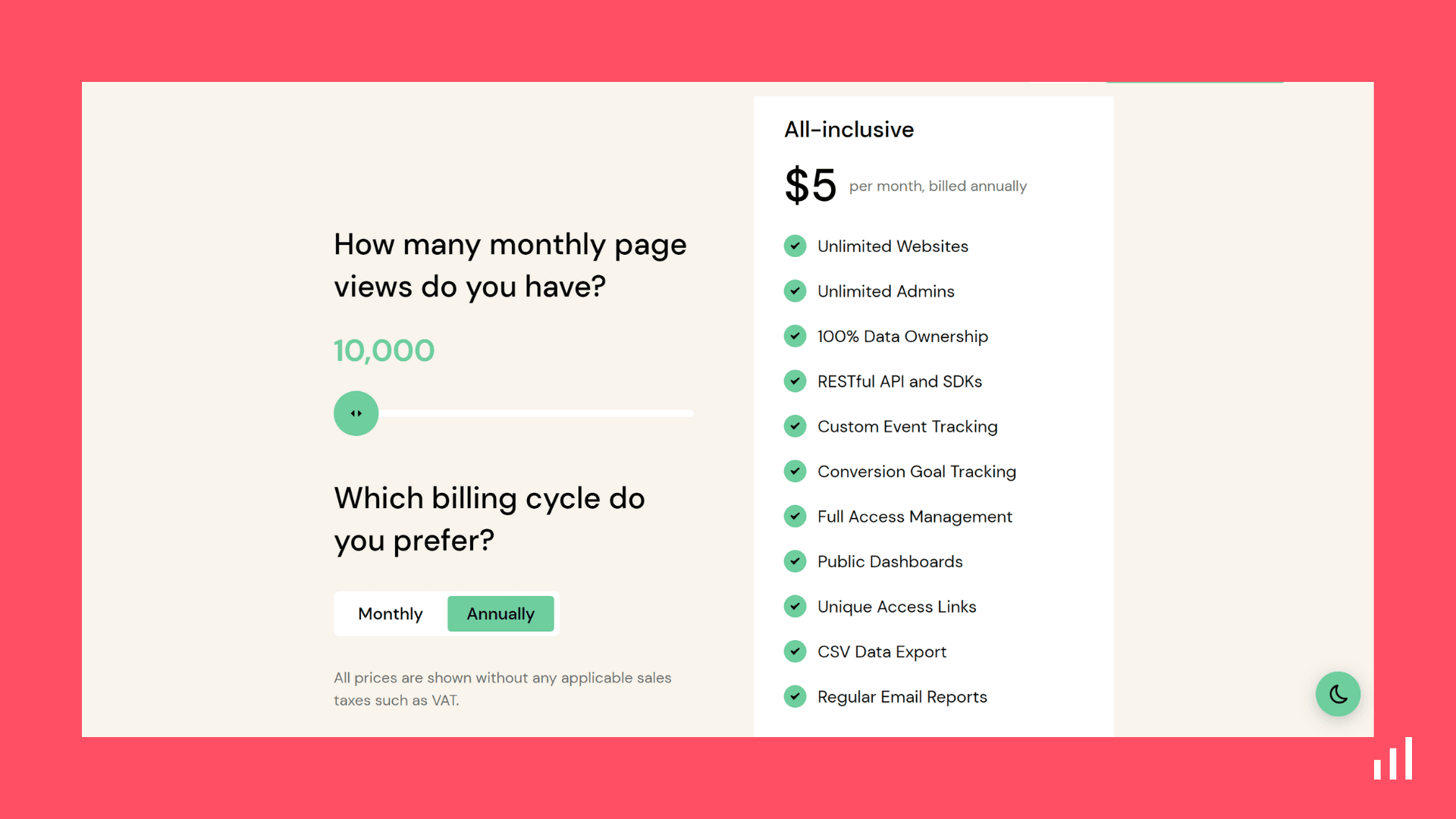
GoSquared
GoSquared Analytics is a simple privacy-friendly analytics that was started in 2010 and was called “Live Stats” back then. The current version is an output of iteration.
The key benefit of using GoSquared is its easy-to-understand dashboard and simple setup. It’s also GDPR compliant and was confirmed by a 3rd party accreditation body.
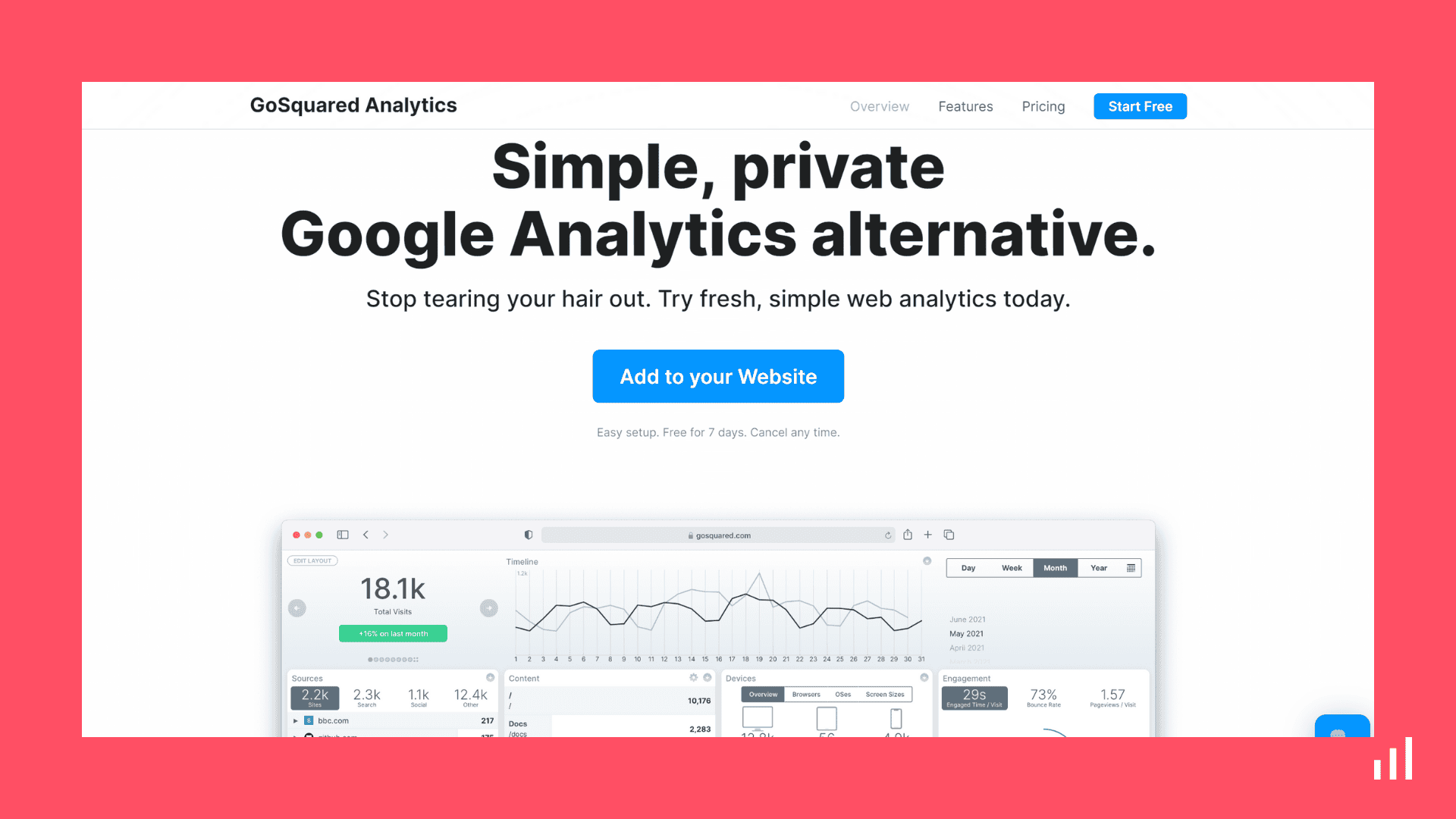
Pros
- Simple and easy-to-understand dashboard.
- Hassle-free setup.
- Affordable pricing.
- Has multiple helpful integrations.
Cons
- Though the dashboard in easy-to-understand but the UI is a bit dated.
- Limited capabilities in event tracking.
Pricing
The pricing of GoSquared Analytics starts at $9/month for three projects (websites) and up to 100,000 pageviews. Their plans have standard features such as unlimited team sharing, email reports, event tracking, etc.
Visitor Analytics
Visitor Analytics is a website analytics tool that calls itself a website intelligence platform as it comes with several other features, such as session recording, polls, surveys, and much more.
It’s a comprehensive solution for anyone who needs more than just web analytics, but at times, this can get overwhelming, too; with more features, the dashboards keep getting cluttered.

Pros
- Offers wide range of features.
- Simple and easy to install.
Cons
- Slightly expensive for small and medium-sized businesses.
- You may have to pay for features you won’t use in a higher plan.
- Uses fingerprinting and is not GDPR-compliant
Pricing
Visitor Analytics multiple pricing plans. The Basic package is priced at $10.39 monthly and includes heatmaps and website analytics for up to 10,000 page views. The Advanced plan, available for $19.99 per month, offers everything the Basic plan features but with higher limits.
Similarly, they have Pro, Pro Plus, and Pro ++ plans which are over the same as the other plans do with even higher limits. They also give access to “Company Reveal,” which lets you know if you are getting traffic for any organizations.
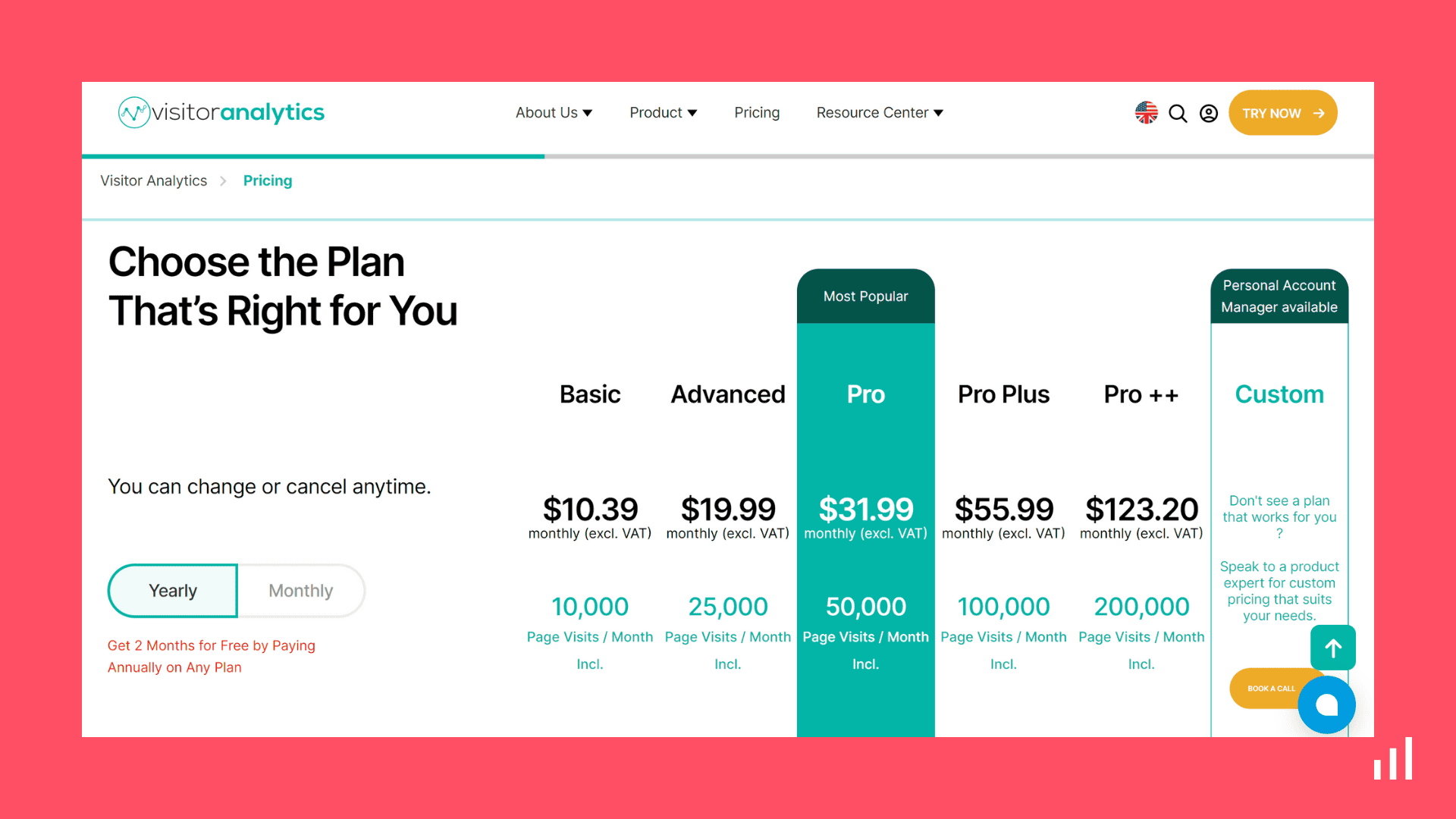
Umami
Umami is an open-source web analytics tool that provides website owners insights into visitor behavior. It was created by three brothers Mike, Brian, and Francis Cao.
Many devs love it as it’s easy to install and get started, but remember that this can be challenging for non-developers. Umami also has event tracking, but users have reported it to be very limited.
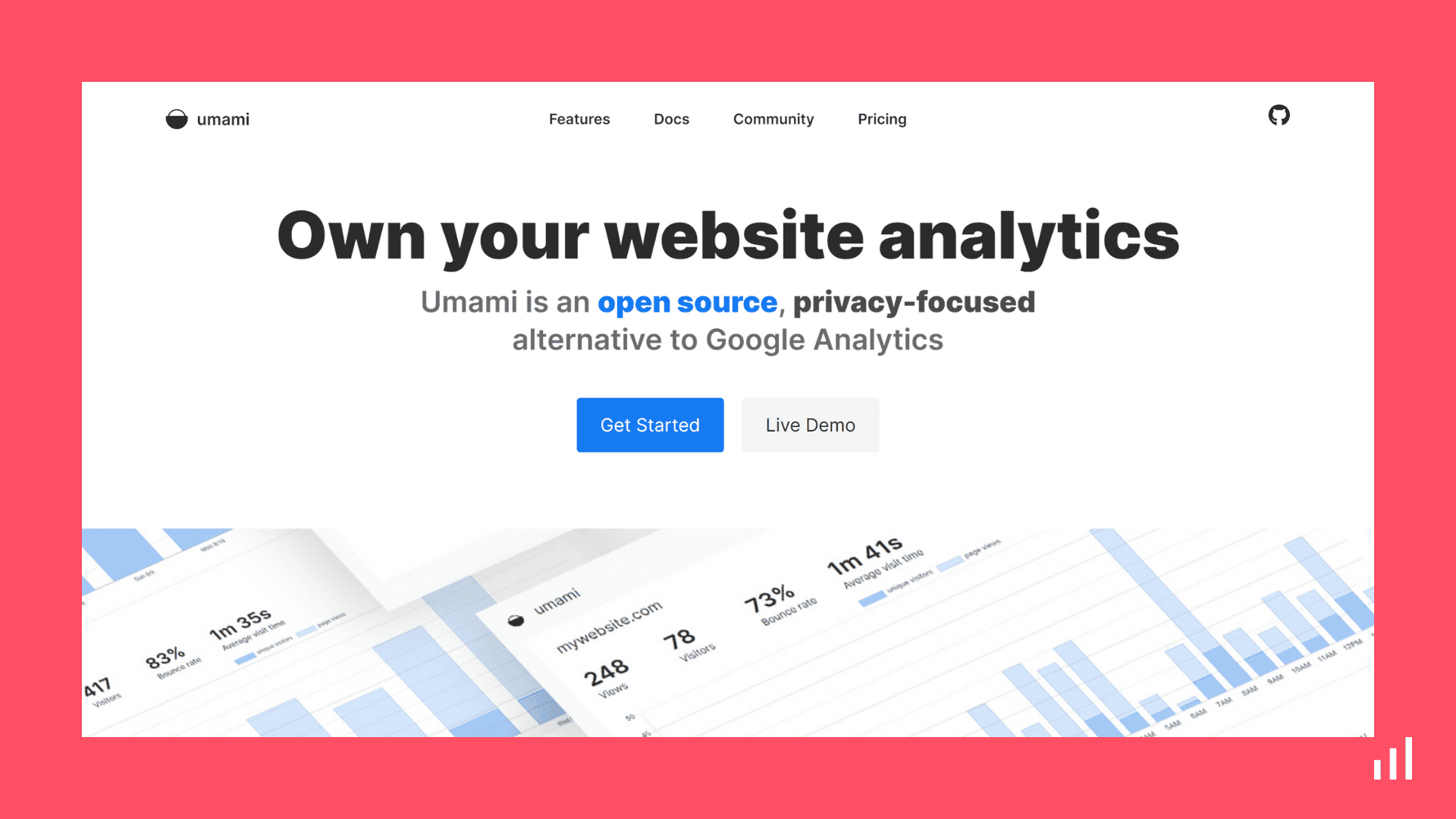
Pros
- Open-source, which means it's free to use if self-hosted.
- Simple and easy dashboard.
- Lightweight web analytics and doesn’t slow the website.
Cons
- Limited support options
- Limited data retention options.
- Limited features compared to other paid options.
Pricing
Umami Analytics was initially only open-source but recently launched a hosted cloud version. The pricing starts at $9/month for 100,000 pageviews. One major issue with all the plans is their limited data retention policy unless you switch to a custom plan.

Piwik PRO
Piwik PRO and Matomo (formerly known as Piwik) evolved out of an open-source project known as Piwik.
Piwik PRO is now an enterprise-focused analytics tool built on the open-source project. It offers web and product analytics and a few other helpful additions, such as tag manager and consent manager.
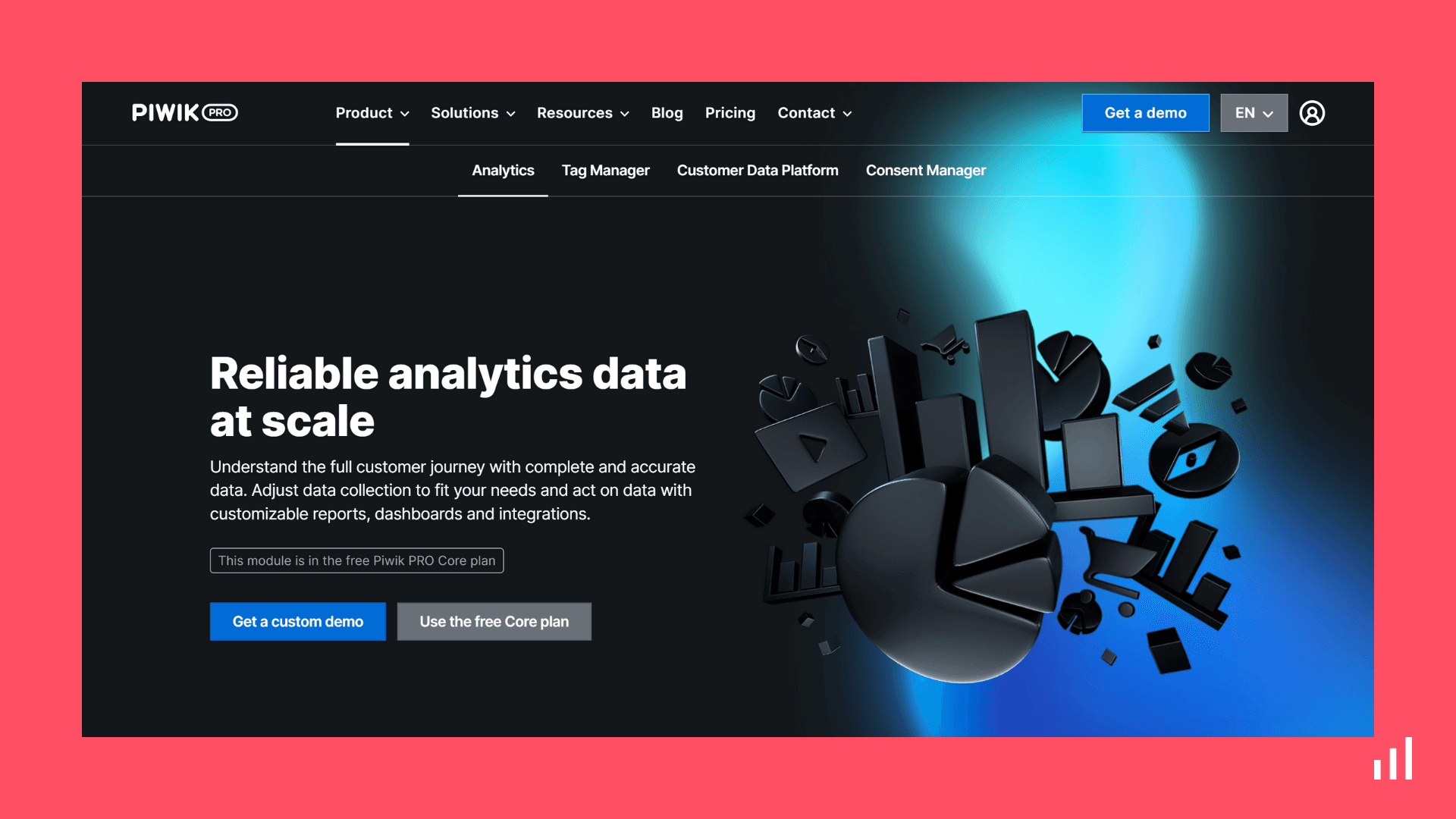
Pros
- Provides detailed reports on visitor behavior, including location, device, and more.
- Open-source, which means it's free to use.
- Offers customizable dashboards and reports.
- Provides privacy-focused options.
- Offers a cloud-hosted solution.
Cons
- Complex analytics tool that requires training
- Piwik has problems with loading, data retention, and an exponential increase in disk consumption.
- Primarily meant from enterprise, hence an expensive solution.
Pricing
Piwik PRO is an enterprise solution and is expected to be expensive. If you try looking up the pricing on their site, you won’t be able to, as it requires contacting the sales team.
Though the pricing isn’t public, but according to Optimize Smart, the pricing plans start at $419/month for 1,000,000+ actions. Note that this info was shared in 2022, so the pricing is highly likely to be updated.
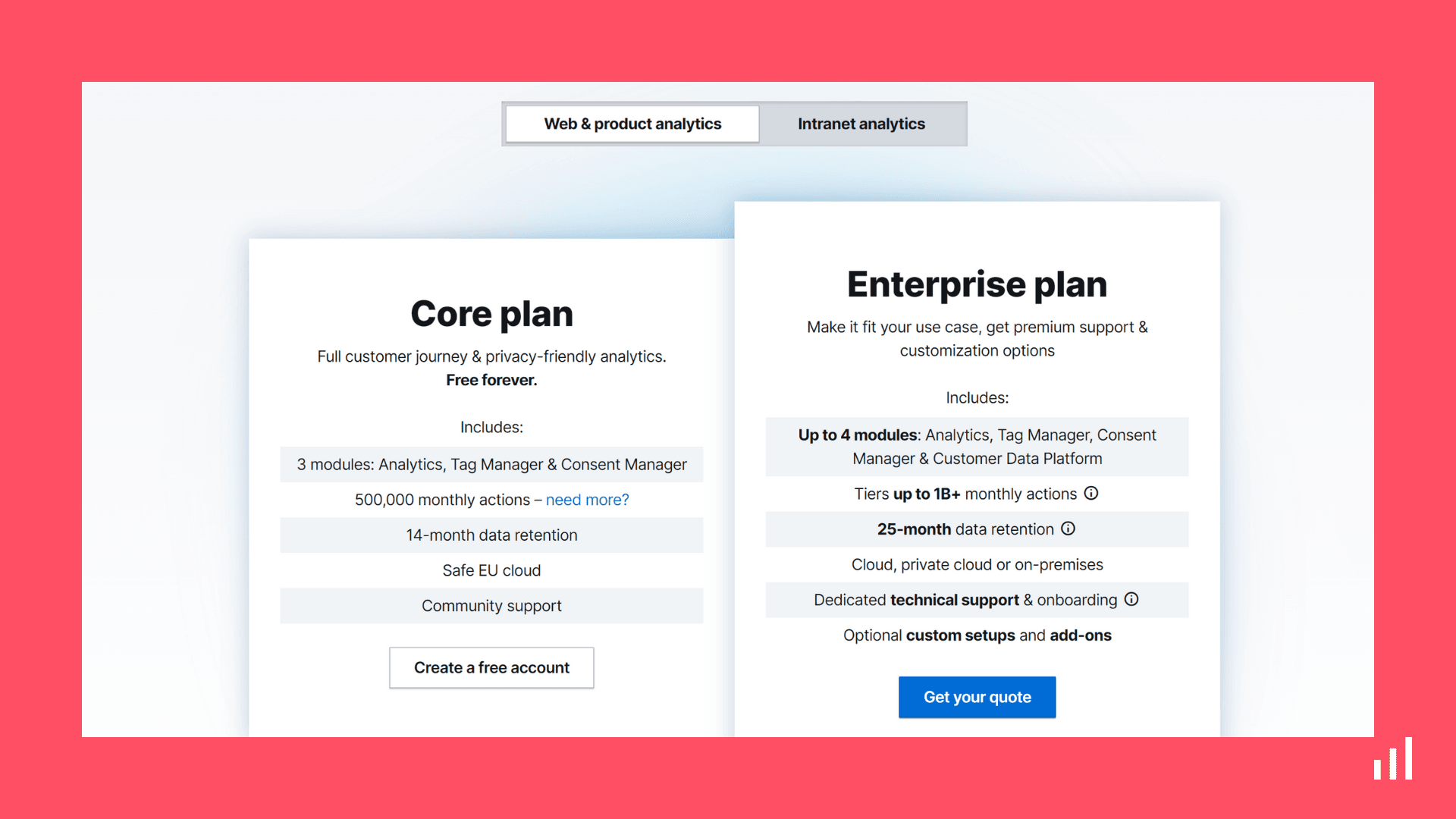
What to look for in an analytics tool
Selecting a tool for your analytics is a crucial decision. Be sure to go through this checklist before making a choice. You're good to go if the tool provides these:
Ease of Use: You shouldn’t spend your time on a complex web analytics tool that takes time and experience to get familiar with.
Accuracy: Getting an accurate picture of what’s happening on your website is important.
Straightforward UI: Most of the time, you don’t need 75 custom dashboards (looking at you, Google).
Lightweight: Installing an analytics script has an impact on your page speed. Choose an analytics tool that doesn’t slow your website down.
Privacy: The world is moving in a direction where privacy is becoming increasingly important.
Integration: Your analytics should be able to integrate with other tools.
Pricing: Consider the tool's pricing and ensure it aligns with your budget.
Although this checklist can assist you in getting started, there may be other factors for your organization that you need to consider.
Final Thoughts
If you want a tool that checks these boxes, then check out Simple Analytics. It provides the insights you need in a straightforward dashboard while being 100% GDPR compliant.
Want to see what that looks like? Check our public dashboard here
We believe the internet should be an independent place that is friendly to website visitors. By opting for Simple Analytics, you’ll be supporting us in our mission and protecting the privacy of your website visitors. If this resonates with you, feel free to give us a try.
